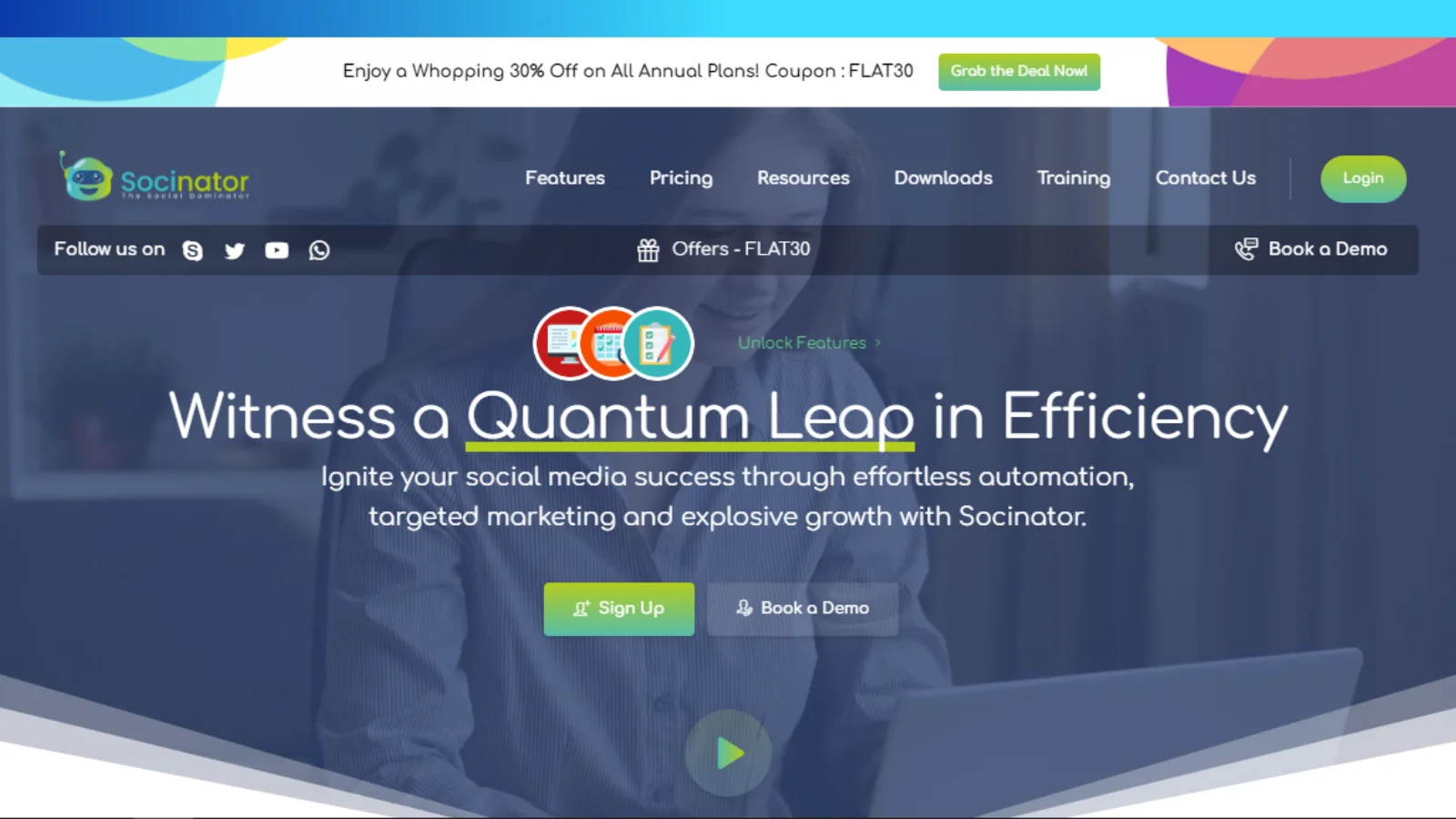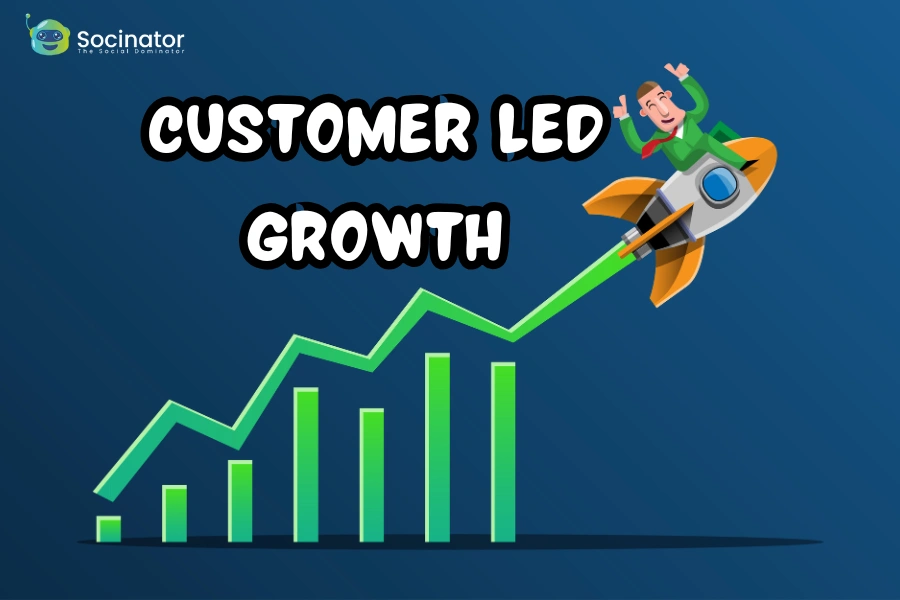Ever feel like you’re constantly posting on social media but not getting anywhere? Content pillars could be the breakthrough you’ve been looking for. They provide structure, clarity, and purpose to your online strategy, helping you post with confidence and direction.
By understanding and implementing a focused content strategy, you’ll gain a clearer picture of how to communicate your brand’s value while keeping your audience engaged on social media.
In this blog, you’ll get a clear understanding of what content pillars are and why they’re so valuable for your brand’s social media success. You’ll learn how they can simplify your content planning, keep your messaging consistent, and make your overall marketing more impactful.
Whether you’re new to social media or looking to refine your strategy, this guide provides practical insights that you can start using right away. Once you master the content pillar, you’ll find it easier to create posts that connect with your audience and support your bigger business goals.
Hit ‘Play’ Button & Tune Into The Blog!
What Are Content Pillars?
If you’ve ever wondered what content pillars are, you’re not alone. In simple terms, the content pillar is a set of key themes or topics that form the foundation of your content strategy. Each pillar supports a core area of your brand’s mission and message, helping you maintain focus and consistency across all your platforms.
Think of them as the guiding framework that ensures every post, blog, reel, or tweet aligns with your brand identity. These pillars reflect the interests of your audience, the value your brand provides, and the goals you aim to achieve.
For example, a fitness coach may focus on themes like Nutrition Tips, Workout Routines, Mindset Coaching, and Client Transformations. Each of these supports the coach’s overall goal of promoting health and wellness while providing value-packed content consistently.
Why Content Pillars Are Crucial For Modern Marketing?
Creating and using strong content pillars is more than just a strategic suggestion; it’s a necessity in today’s crowded digital marketplace. Here’s why:
1. Consistency Across Platforms:
One of the biggest challenges brands face is maintaining a consistent message across multiple platforms. Content pillars ensure that no matter where your content appears, on Instagram, LinkedIn, or YouTube, it always communicates a unified brand voice.
2. Streamlined Content Creation:
With a defined content pillar, brainstorming and planning content becomes easier. You no longer start from scratch; instead, you have clear categories to build from, reducing content fatigue and increasing productivity.
3. Improved Engagement and Loyalty:
When your audience sees regular, valuable content that speaks directly to their interests, they are more likely to engage. Over time, this builds trust and positions your brand as a reliable resource.
4. Enhanced SEO and Discoverability:
Strategically aligned themes help with keyword targeting and SEO optimization, making it easier for your content to appear in relevant search results. As a result, this boosts organic traffic and enhances your online visibility.
Also Read:
7 Steps to Engage Your Audience on Social Media
5 Important Steps To Develop Content Pillars
Creating an effective content pillar doesn’t happen by accident. It requires strategic planning, research, and a deep understanding of your audience.
Here’s how you can build powerful pillars from scratch:
1. Define Your Brand Goals:
Start by asking what you want to achieve through your content. Are you aiming for brand awareness, lead generation, customer loyalty, or thought leadership? Your goals will shape the kind of content pillar you need.
2. Understand Your Audience:
Use tools like Google Analytics, social media insights, and customer surveys to identify what your audience is interested in. What problems are they trying to solve? What kind of content captures their attention the most?
3. Audit Existing Content:
Look at your existing content and categorize it. Are there recurring themes? Are certain topics performing better than others? Use these insights to guide the creation of your new content pillar.
4. Choose 3 to 5 Core Pillars:
Select a handful of themes that resonate with both your brand identity and audience interest. Make sure each pillar is broad enough to generate multiple content ideas, but specific enough to stay focused.
5. Create Subtopics Under Each Pillar:
Once your pillars are in place, list 5–10 subtopics under each one. For example, under a pillar like Email Marketing, you might include Automation Tips, A/B Testing, and Email Design Best Practices.
How Content Pillar Powers Social Media Strategy?
Your content pillars are the engine behind a successful social media strategy. Here’s how they elevate your efforts:
-
Schedule with Purpose:
Having a clear content pillar transforms your content calendar from random posts into a purposeful plan. Each pillar represents a theme that supports your brand’s goals. You can assign specific days to certain pillars, like Motivation Mondays or Tutorial Thursdays.
This brings variety, ensures consistency, and keeps your content aligned with your strategy. It also saves time by streamlining your planning process.
-
Foster Audience Trust:
When your audience sees consistent themes and messaging, they begin to recognize and rely on your brand’s voice. Repetition of values, tone, and visual identity builds familiarity.
Over time, this strengthens your brand’s credibility and emotional connection with followers. Key topics make it easier to stay true to your messaging across platforms. As a result, trust grows, and trust drives engagement and loyalty.
-
Balance Value and Promotion:
A common social media mistake is focusing too heavily on selling. A balanced content strategy helps you mix educational, entertaining, inspiring, and promotional content in a balanced way. This keeps your audience engaged without feeling overwhelmed by sales messages.
For example, a week’s plan might include tips, user stories, product highlights, and fun facts. This well-rounded mix builds value and nurtures long-term relationships.
-
Track Performance Accurately:
Organizing content by themes allows you to analyze which type resonates most with your audience. For instance, you can compare how posts under Customer Testimonials perform versus How-To Guides.
This structured approach gives you insights into content effectiveness beyond basic metrics. Use the data to refine your pillars and focus on what works best. Ultimately, it helps you create smarter, results-driven content strategies.
Tools To Manage Content Pillar Efficiently
Managing content pillars effectively requires the right tools. These platforms help you stay organized and consistent:
Task Management Tools:
Project management tools are essential for organizing your content strategy. You can create task boards or timelines dedicated to each content pillar, assign responsibilities, and monitor progress.
This ensures everyone on your team knows what’s due and when, helping maintain consistency in your posting schedule. They also make collaboration seamless, especially when working across departments or with external creators.
Content Planning Workspaces:
Using an all-in-one workspace can streamline how you plan and track your content. You can build databases for each pillar, log post ideas, manage deadlines, and even record performance analytics in one place.
These workspaces act as a central hub, keeping your entire content strategy accessible and organized. It’s especially helpful for visualizing how each content pillar contributes to your overall goals.
Design Tools:
Visual design tools help bring your content pillars to life through engaging graphics, videos, and branded templates. Whether you’re designing infographics for educational content or creating promotional visuals, having flexible design tools can save time and ensure visual consistency.
These tools often come with pre-made layouts, making it easy to customize your content for each platform.
Social Media Management Software:
A robust social media management software like Socinator can significantly enhance how you manage and execute your content strategy.
It allows you to schedule posts, automate publishing, engage with your audience, and track performance, all from a single dashboard. With features tailored for efficient workflow, Socinator helps you stay organized, consistent, and data-driven across every content category.
Examples Of Effective Content Pillars
To get your creative juices flowing, let’s explore some successful content pillar examples from different industries:
E-commerce Brand:
An e-commerce brand can build a strong connection with its audience by focusing on content pillars like Product Highlights, where new arrivals or bestsellers are showcased in engaging ways.
Customer Testimonials add social proof and trust, while Behind-the-Scenes content gives followers a look into the people and processes behind the brand.
Lifestyle Inspiration connects products to real-life scenarios, helping customers envision how they fit into their lives. Lastly, Sustainability Tips can resonate with eco-conscious shoppers and position the brand as socially responsible.
Digital Marketing Agency:
For a digital marketing agency, valuable key focus areas might include SEO Tips that educate the audience on improving visibility online and Paid Advertising Strategies to demonstrate expertise in driving results.
Client Case Studies can showcase past successes and build credibility. Sharing Social Trends helps the agency appear forward-thinking and adaptive, while Industry News keeps the audience informed and positions the agency as a thought leader in the marketing space.
Fitness Influencer:
A fitness influencer can create a highly engaging presence by using pillars like Workout Routines that provide followers with actionable fitness plans.
Nutrition Advice complements this by helping with diet and meal prep tips. Sharing a Personal Journey, from transformation stories to daily struggles, adds authenticity and relatability.
Client Shoutouts not only celebrate others’ success but also serve as social proof. Finally, a focus on Wellness Mindset addresses the mental and emotional side of fitness, creating a more holistic and meaningful connection with the audience.
The Role Of Content Pillars In Social Media Marketing?
In the realm of social media marketing, foundational themes act as the foundation that holds your strategy together. They guide your messaging, content creation, and engagement tactics. Here’s how they specifically enhance marketing efforts:
- Audience Segmentation: With dedicated pillars, you can target different segments of your audience more precisely.
- Campaign Focus: Use pillars to align campaigns with specific marketing goals like awareness, conversions, or customer retention.
- Brand Voice Reinforcement: Repeating key messages within each pillar helps strengthen your brand voice, creating consistency and trust across all touchpoints..
When powered by social media marketing software, you can automate content scheduling and measure the effectiveness of each pillar-based campaign in real time.
To execute these strategies more effectively, Socinator, a powerful social media management tool, makes it easy to plan, automate, and optimize your pillar-based campaigns with precision.
Also Read:
Why Social Media Marketing Software Is Important For Your Business?
7+ Types Of Social Media Content You NEED To Post
Why Choose Socinator For Managing Your Content Pillar?
- Social Media Scheduling:
Organize and set up your content ahead of time for multiple platforms. Socinator ensures consistent posting that aligns with your content pillar, helping you maintain a strong online presence effortlessly. - Content Management:
Organize your ideas and visuals for each pillar in one centralized dashboard. Socinator allows you to post your social media content more efficiently, managing your social media content calendar. - Automation Tools:
Automate routine tasks such as posting, following, commenting, and messaging. Socinator helps streamline your workflow so you can focus more on content strategy and creativity. - Account Security:
With advanced account protection features, Socinator keeps your social profiles safe while allowing for smooth multi-account management, ideal for teams and agencies.
How To Measure The Success Of Content Pillars?
 Creating and deploying core content themes is only half the battle. Measuring their effectiveness is crucial to refining your strategy.
Creating and deploying core content themes is only half the battle. Measuring their effectiveness is crucial to refining your strategy.
1. Engagement Metrics:
Track likes, shares, comments, and saves on posts under each pillar. Higher engagement indicates that the content resonates with your audience.
2. Traffic and Conversions:
Use tools like Google Analytics to determine how much traffic each pillar drives to your website or landing pages. Track conversions from specific content types to see what’s delivering results.
3. Audience Growth:
A consistent increase in followers and subscribers often means your content approach is attracting the right people.
4. Sentiment Analysis:
Monitor how your audience feels about your content through comments and messages. Are they positive, inquisitive, or critical? Use this feedback to adjust your pillars accordingly.
Future Of Content Pillar In A Changing Landscape
As the digital world rapidly evolves, the content pillar must adapt to stay effective. Emerging technologies like AI, AR/VR, and immersive storytelling are reshaping how audiences engage with content.
AI enables highly personalized messaging, allowing pillar-based content to be tailored to specific segments for better impact. Visual platforms are also embracing interactive media, videos, 3D elements, and AR are becoming essential for capturing attention.
Meanwhile, data is becoming more critical than ever, offering valuable insights to refine and optimize each pillar. To stay ahead, brands must remain flexible and continually update their strategies to align with these fast-moving digital trends.
Final Thoughts
Content pillars aren’t a one-time setup; they’re a dynamic framework that evolves with your brand and audience. They bring structure, consistency, and clarity to your social media strategy, helping you engage more meaningfully.
By staying creative, analyzing performance, and adapting to trends, you can keep your framework strong and effective. Whether you’re just starting or refining your strategy, mastering your content framework is key to long-term digital success.
FAQs
1. How often should I update my content pillar?
Ans. You should review and update your core content themes every quarter or whenever there are major shifts in your audience behavior, business goals, or market trends. This ensures your strategy stays relevant and impactful.
2. Can small businesses benefit from using a content pillar?
Ans. Absolutely. Content pillars help small businesses stay focused, create consistent content, and build a recognizable brand voice, without needing a large team or budget.
3. How many pieces of content should I create per pillar each week?
Ans. There’s no one-size-fits-all rule, but a good starting point is 1–2 quality posts per pillar weekly. This keeps your content balanced, organized, and aligned with your marketing goals.











